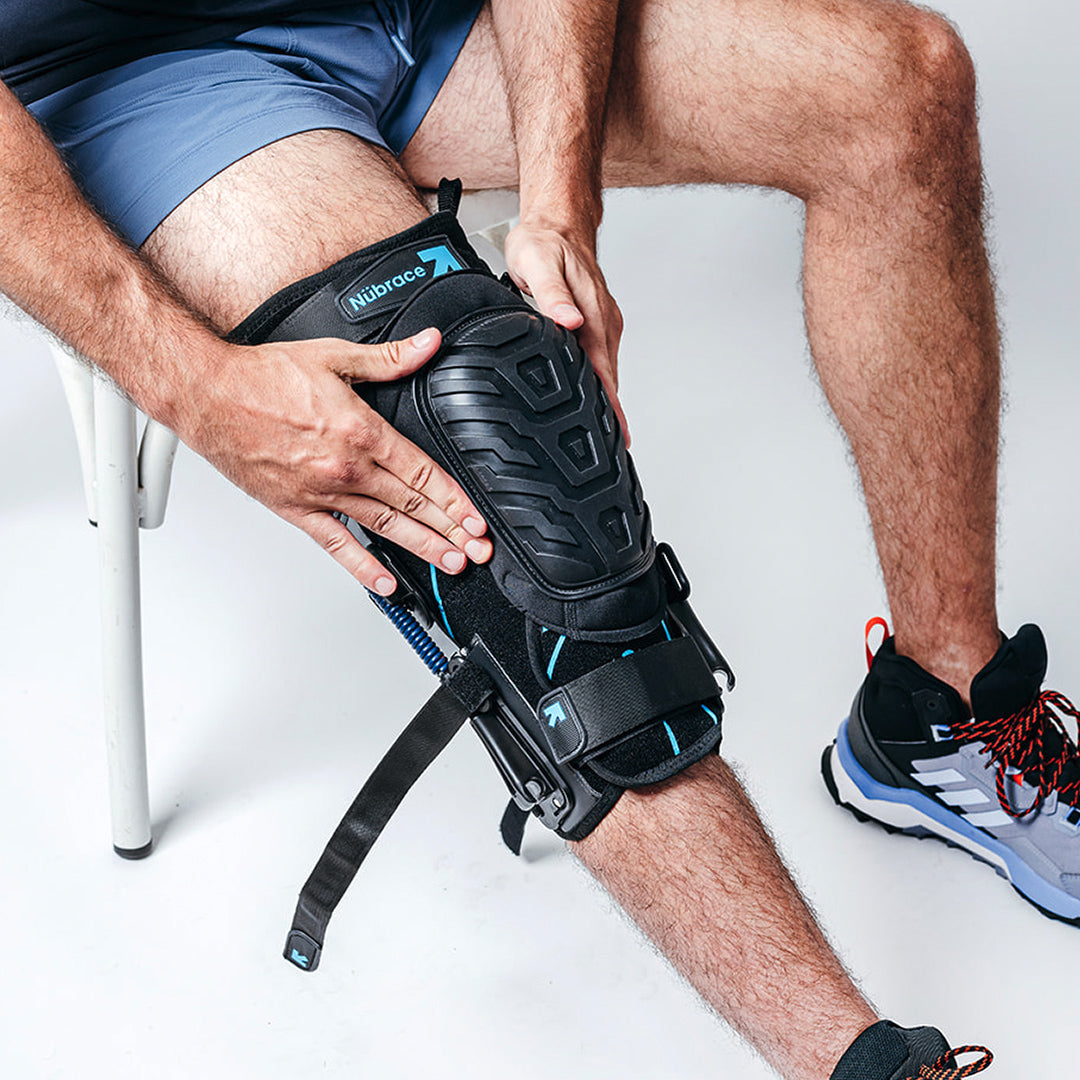The best Knee Brace for ACL injuries is a functional knee support brace designed to stabilize the joint, limit risky side-to-side or twisting motion, and protect the anterior cruciate ligament during recovery and activity. Whether you are using a leg brace after knee surgery or looking for knee support for exercise like skiing or cycling, a functional brace provides the highest level of protection while still allowing safe mobility.
Understanding ACL Injuries
The anterior cruciate ligament (ACL) is one of the four key ligaments in the knee, crucial for stability. Injuries occur when the ligament is overstretched or torn, often during sudden stops, jumps, or direction changes. Athletes in soccer, basketball, and skiing are particularly at risk.
An ACL tear can range from a partial sprain to a complete rupture. In both cases, stabilizing the knee is essential. That’s where choosing the right knee support brace becomes critical.
The Role of Knee Braces in ACL Recovery
A Knee Brace doesn’t heal the ligament on its own, but it plays a vital role in:
- Stabilizing the joint to prevent further damage.
- Reducing pain and swelling by limiting excessive motion.
- Building confidence for patients returning to movement.
- Supporting rehabilitation after surgical reconstruction.
By restricting dangerous movements such as pivoting or twisting, the brace gives the ACL the chance to recover safely.
Functional Knee Support Brace: The Top Choice
When it comes to ACL injuries, functional knee braces are the gold standard. These braces are specifically engineered for ligament protection:
- They feature rigid side supports (hinges) to prevent side to side stress.
- Adjustable straps provide a secure fit for various activities.
- They allow controlled movement while avoiding harmful twisting.
For both surgical and non surgical cases, this type of knee support brace is the most reliable.
Leg Brace After Knee Surgery
After ACL reconstruction, many patients are prescribed a leg brace after knee surgery or a knee brace after knee surgery to aid recovery. These rehabilitative braces:
- Control the range of motion, often set by the surgeon.
- Prevent hyperextension that could damage the graft.
- Support walking during the early healing phase.
In the first weeks post surgery, this type of brace is crucial. It gradually allows increased mobility as the knee regains strength.
Knee Support for Exercise
As recovery progresses, returning to movement is important. The right knee support for exercise depends on the intensity and type of activity. For example:
- Knee support for skiing - Skiing places high rotational forces on the knee. A functional hinged brace is strongly recommended to protect against sudden twists.
- Knee support for cycling - Cycling is lower impact but repetitive. A lighter knee support brace or compression sleeve can reduce strain and swelling while allowing pedaling flexibility.
- Knee support for exercise at the gym - Weight training, lunges, or squats benefit from a supportive brace that stabilizes the knee without limiting controlled motion.
By matching the brace type to the activity, you minimize the risk of re-injury.
Comparing Brace Types for ACL Injuries
To simplify, here’s how the most common options stack up:
- Functional Knee Brace - Best for ACL protection, sports, and active recovery.
- Rehabilitative Brace - Used as a leg brace after knee surgery, designed for healing and controlled mobility.
- Prophylactic Brace - Used by athletes to prevent injury in high-risk sports.
- Knee Sleeve - Provides compression but not enough protection for ACL tears; more suited for mild discomfort.
For anyone with an ACL injury, the functional knee support brace remains the most effective option.
Why Choosing the Right Brace Matters
Using the wrong type of Knee Brace can slow down recovery or even worsen the injury. For example:
- Wearing only a soft sleeve after a full ACL tear offers little stability.
- Using no brace at all during early recovery risks graft failure after surgery.
- Not adjusting the brace properly can cause uneven support and discomfort.
Your doctor or physical therapist can recommend the best fit, but knowing the options helps you make informed decisions.
Everyday Scenarios
- Post-Surgery Recovery
A knee brace after knee surgery helps control range of motion, especially in the first 6-12 weeks. Patients often transition to a functional brace later. - Returning to Sports
For skiing, a hinged knee support for skiing ensures safe turns and landings. For cycling, a lighter knee support for cycling prevents swelling during long rides. - Daily Activity
Even simple walking or climbing stairs can strain the ACL. A knee support brace provides reassurance and reduces accidental instability.
Beyond Bracing: Holistic ACL Care
While bracing is essential, it works best with a comprehensive approach:
- Physical therapy - Strengthening quadriceps, hamstrings, and glutes.
- Low-impact cardio - Swimming, cycling, or elliptical workouts.
- Proper footwear - Shoes with good support reduce joint stress.
- Gradual return to sport - Avoid rushing into high-impact movements.
The combination of a Knee Brace, structured rehabilitation, and careful activity progression ensures the best chance of full recovery.
Psychological Benefits
Knee injuries often create fear of movement. Wearing a knee support brace not only stabilizes the joint but also restores confidence. Whether skiing downhill or cycling long distances, the assurance of protection allows athletes to perform without hesitation.
Conclusion
The best Knee Brace for ACL injuries is a functional knee support brace. It provides the highest level of stability, prevents harmful twisting, and supports both surgical and non-surgical recovery. In the immediate period after reconstruction, a leg brace after knee surgery or knee brace after knee surgery is vital. As healing progresses, choosing the right knee support for skiing, knee support for cycling, or knee support for exercise helps maintain strength and prevent re injury.
By investing in the right type of brace, you protect your joint, speed up rehabilitation, and regain confidence in movement ensuring a healthier, more active future.









